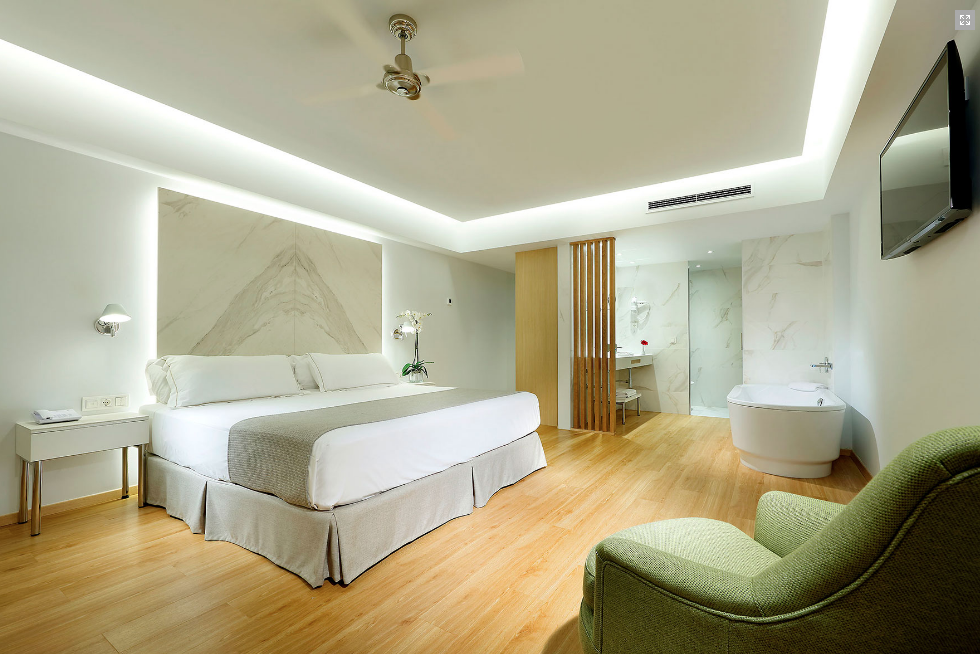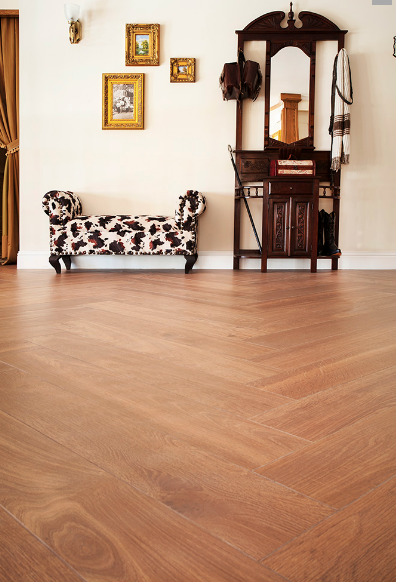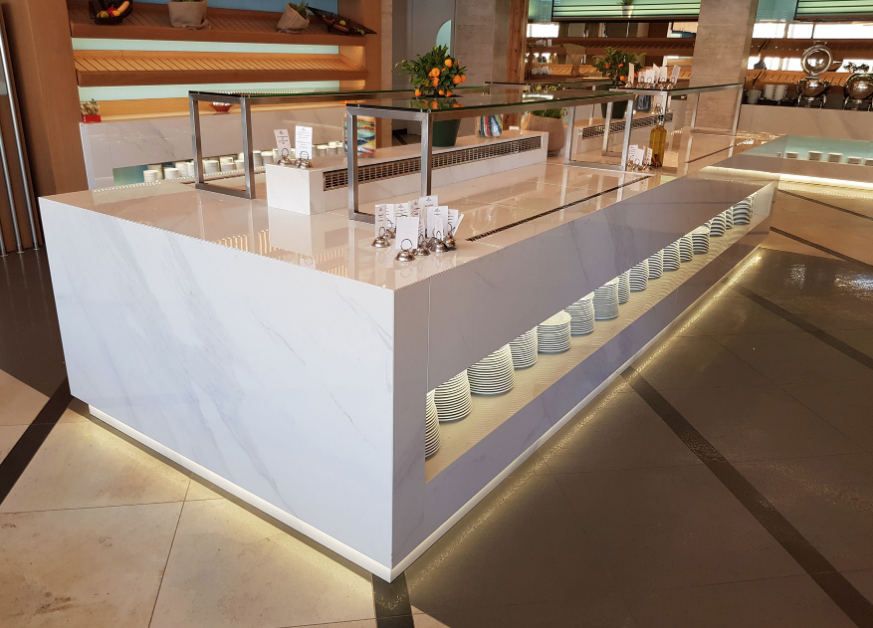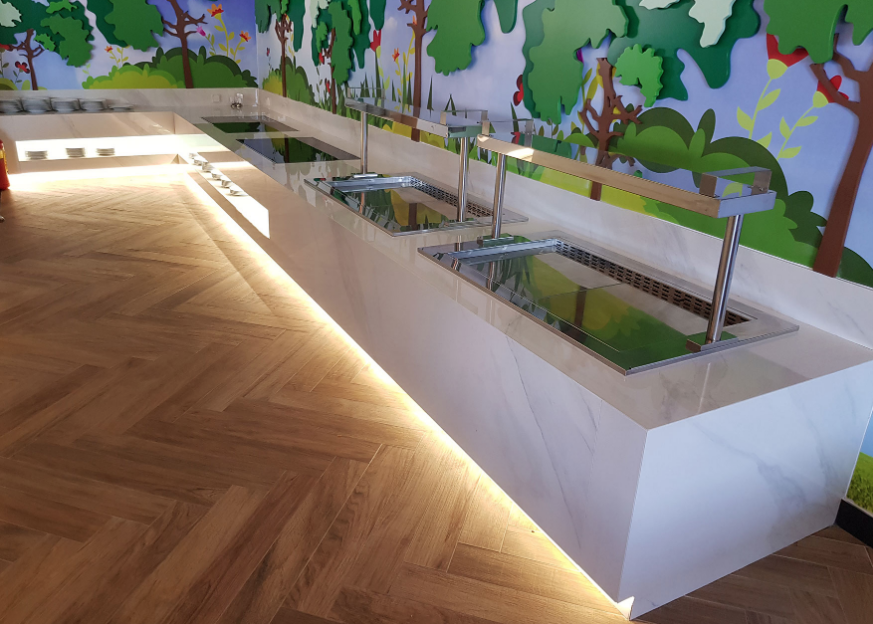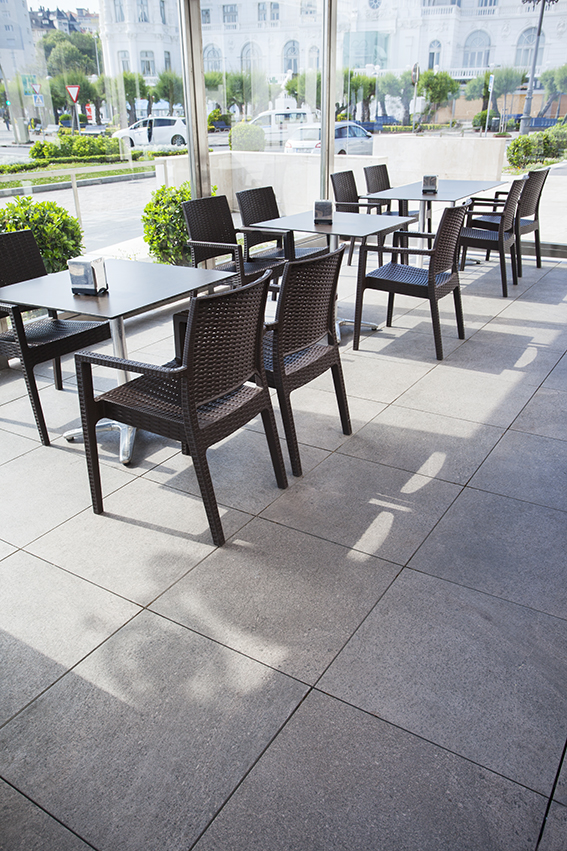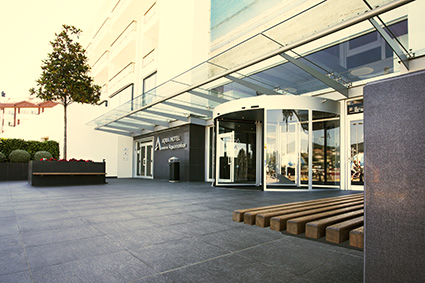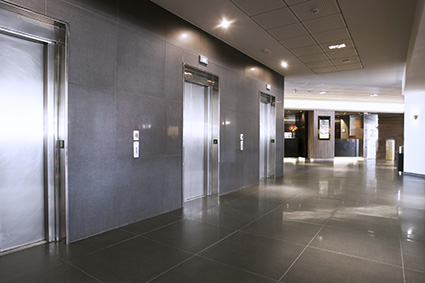The latest trends in hotel architecture and interior design make the case for offering guests more than just a place to stay.
Users' demands and aspirations have gradually changed over recent years, with their priorities shifting towards design and comfort, rather than purely functional and economical aspects.
In trying to find a personality that is unique to the hotel, the most contemporary hotels have moved away from a neutral, sanitized feel, towards a much more personal style. To that end, they seek an enduring interior design, one which leaves its mark on the guests, encouraging them to return. With this idea in mind, we take a tour of some of the hotels that have managed to use their design to set themselves apart and connect with their clients.
Interior Design Makes All The Difference
The use of bright colours in the common areas has become a design imperative in contemporary hotels.
Using intense shades is a way of endowing spaces with personality and warmth, so that the client feels at home.
The Art Hotel in South Korea makes a well-thought-out use of bright colours through accessories such as furniture and decoration. It’s a simple way to lend a fresh touch to the room, without visually overloading the space.
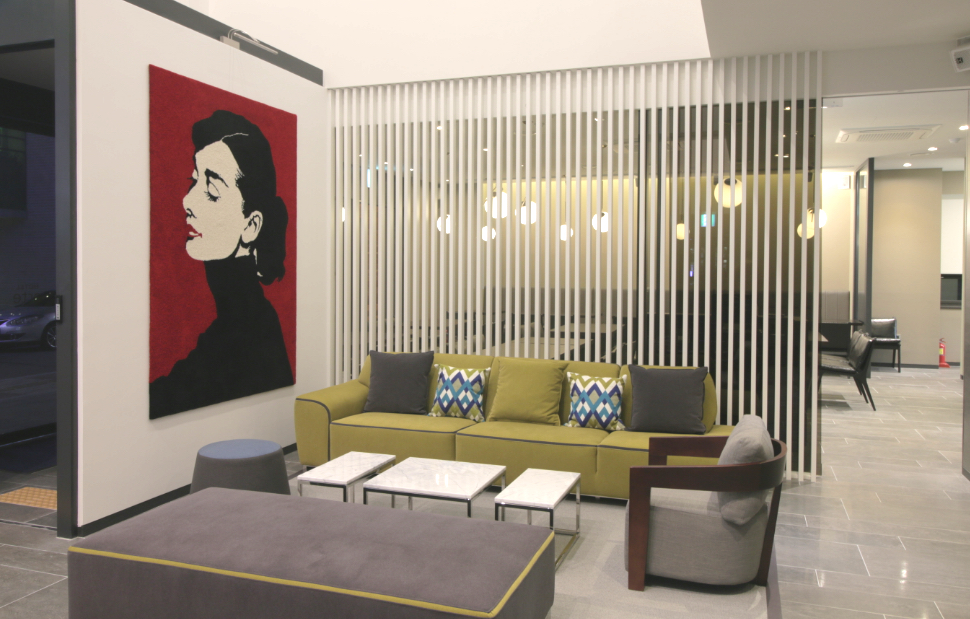
With a similar application, but focusing on a single colour, we find the Hotel Ciudad de Binéfar in Huesca, designed by David Ardanuy. The unique choice of red as the predominant striking colour creates an extremely elegant, modern contrast against the dark shades chosen for the flooring throughout the hotel.
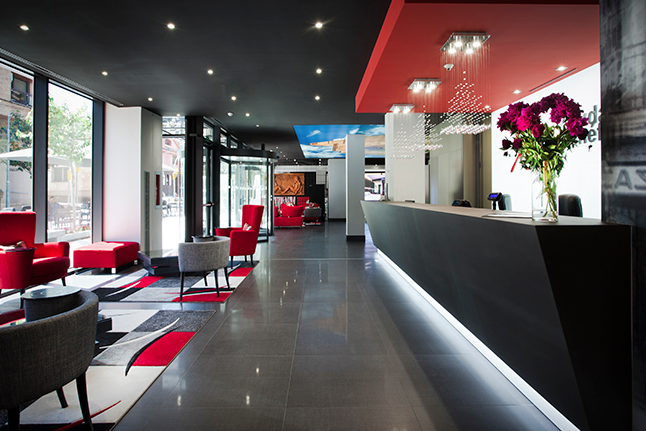
In order to withstand heavy footfall, safety and durability are essential qualities in this type of floor. In this project, the choice of a good material such as technical porcelain, along with the exquisite design of the collection, ensure that all those who enter are surrounded by a safe environment that breathes colour and sophistication.
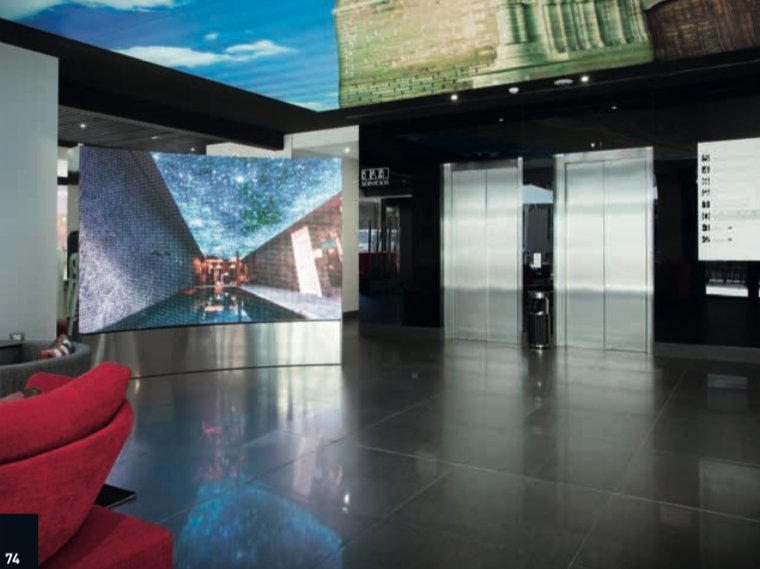
Hotel The Element in Cambrils, Tarragona is designed along the same lines, but with a predominant electric blue colour scheme, contrasting with lighter neutral tones for both the floor and wall tiles. The effect is reversed, but the result is just as appealing.
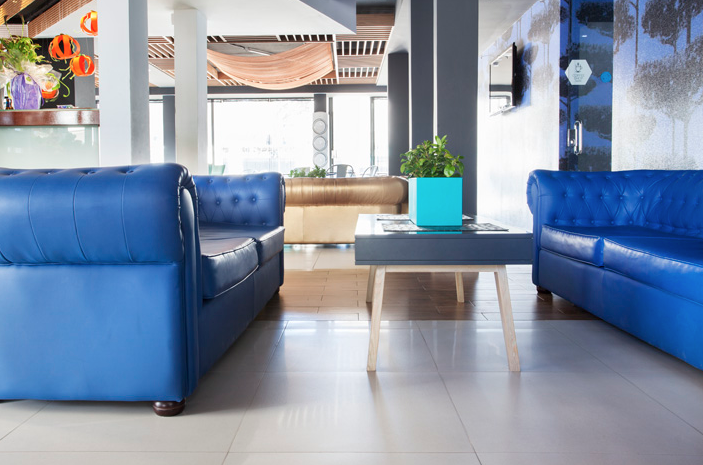
For contract projects, mixing designs and materials is a safe bet if you know how to do it right. The Hotel Innside in Leipzig, Germany—a design project by the studio Proffetional—is an apt reflection of this trend; it combines the classical aesthetics of marble-look porcelain with the most avant-garde decor.
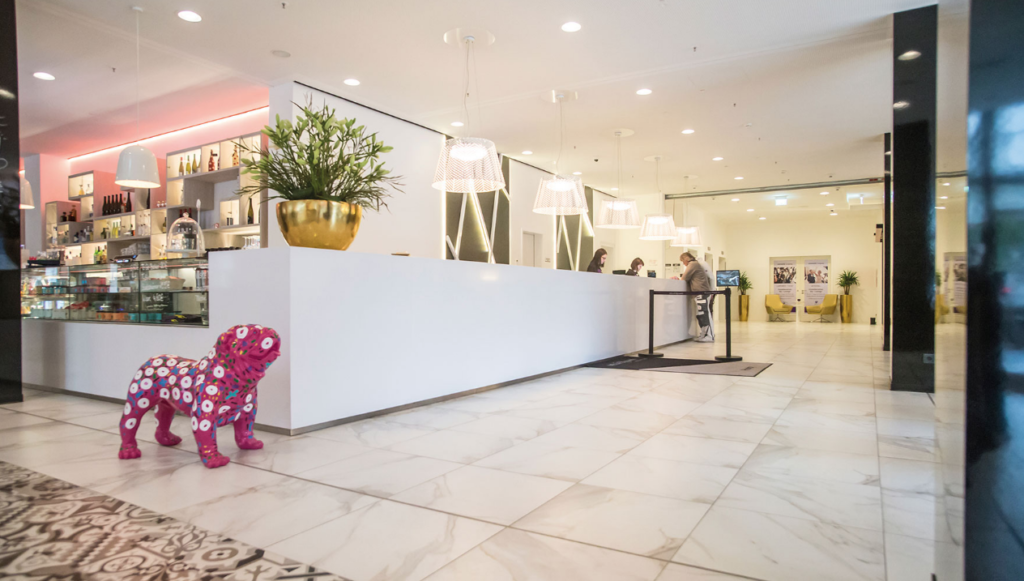
Marble-look porcelain is a preferred material in contract projects thanks to its superior technical characteristics—such as its low porosity—compared to natural marble.
A perfect mix that produces a very special, personality-filled space, which is sure to enchant the guests.
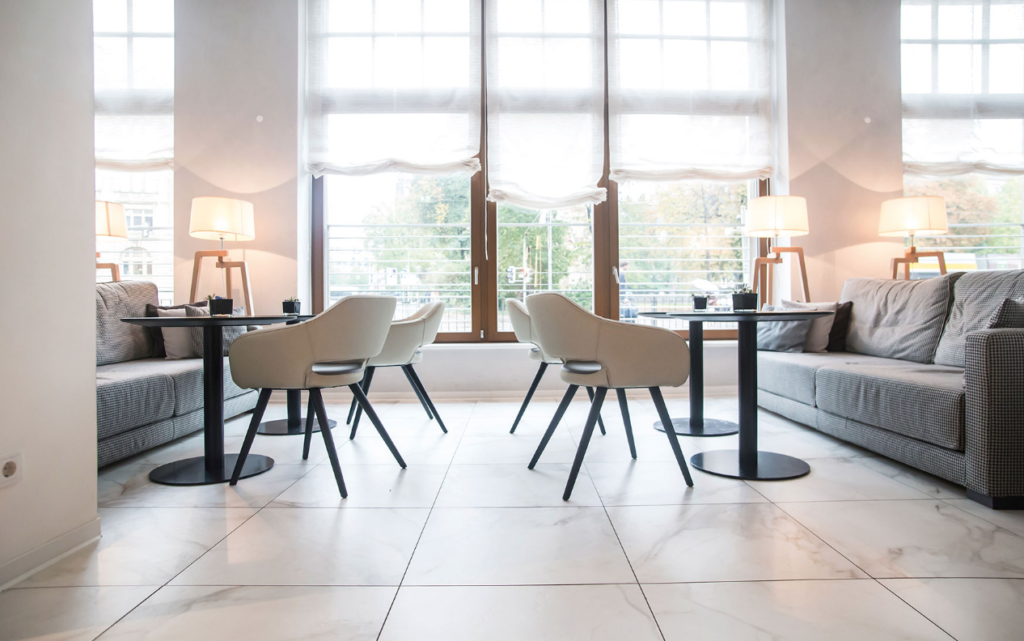
Displaying a distinct classical trend, with the use of wood-look porcelain playing a central role in the design, we have the Hotel Callaghan in Tarragona. Located in a well-known theme park, guests at this hotel are immersed in the luxury of the Golden Age of the Far West.

The endless possibilities for customization offered by porcelain find their culmination in this project, with the unique, exclusive design of a windrose in the hotel hall.
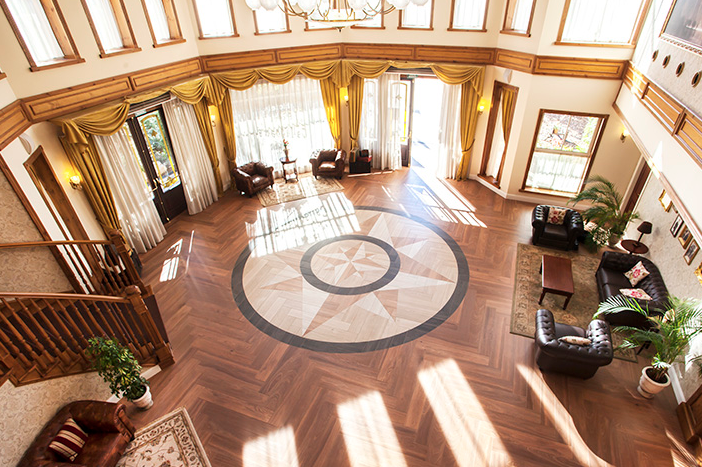
The use of a herringbone pattern for the floor and an exquisite selection of vintage furniture bring out the elegance of the rooms, taking them to the next level.
One room which is gaining prominence and importance in renovation or new-build projects is the bathroom. Traditionally, the approach to designing these spaces has been functional, but nowadays the idea behind the design is to offer the clients an added value.
The Hotel Caldera Palace in Crete uses grey tones and cement-look porcelain to achieve a modern aesthetic, with a markedly urban, functional character.
A supremely avant-garde tone is set by the Hotel Ciudad de Benifar in Huesca, with the use of thin, large-format metallic-effect wall tiles in the bathrooms. As this type of material can be quickly installed, even on top of the existing surface, contract renovation projects can be carried out simply and cleanly.
Coverlam Lava is a restrained, elegant choice for a space where modernity coexists in perfect harmony with the comfort and functionality that every hotel must offer.

Marble-look porcelain remains a favourites among architects when it comes to designing hotel rooms. A great showcase for this trend is Hotel Caleia Talayot in Mallorca, designed by Atemporal Home Interiors.
The use of a completely updated and modern design of porcelain marble creates luminous rooms, radiating absolute elegance.

Its unique, innovative and creative personality is evident in every room of the hotel; from the reception to the spacious dining room, the bedrooms or its incredible spa, where the anti-slip benefits of porcelain flooring are essential.
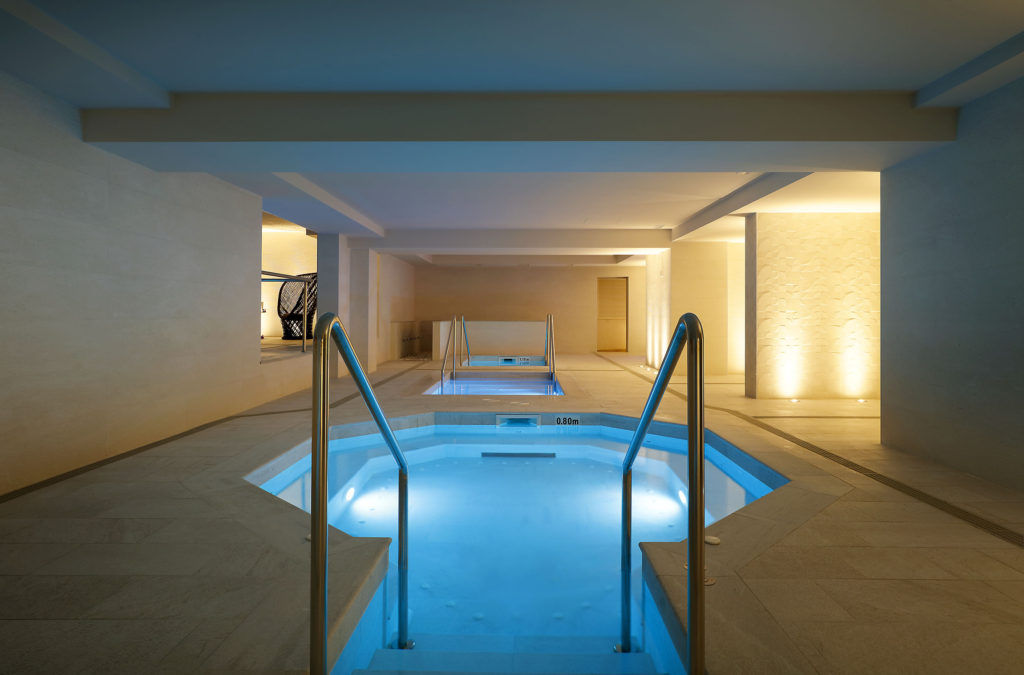
The use of marble-look porcelain in the headboard is an innovative, original decorative option, endowing the bedrooms with an exclusive, distinctive feel.

An ultraresistant material such as marble-look porcelain is a plus in contract projects like the development of this hotel in Greece. The fact that it can be installed in areas of heavy use, such as the dining area, makes this material of clean lines and great aesthetic beauty a favourite among architects.
As porcelain is non-porous, it makes a hygienic, antibacterial surface that is ideal for food preparation.
The clearest, purest sophistication of marble can be found in the Hotel & Spa Prystan, in Poland. In this project, carried out by Dżus GK Architekci, statuary marble-look porcelain is used to provide a timeless and simple elegance, while enhancing the radiance of the hall.

Extra: Exteriors Take Centre Stage
Going beyond interior design, hotel terrace design has become a key element in capturing clients' attention; as such, it is ever more important to attend to every last detail during project execution.
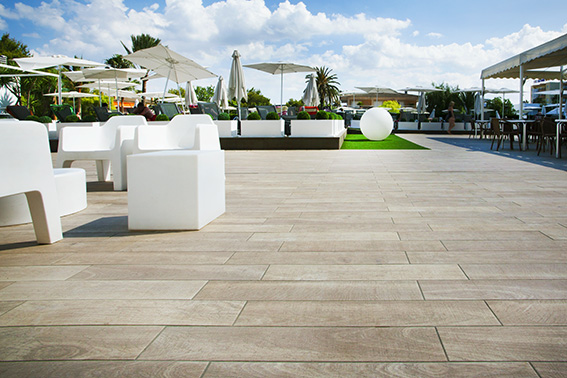
Aspects such as the appropriate choice of furniture, flooring, or adequate protection against the sun are essential for a successfully executed project.
The cornerstone of the design of the terrace at the Hotel Delfín Azul in Mallorca is the use of wood-look porcelain for the floor. Technically well-suited for outdoor use, this flooring features an ultra-realistic design. Safety is a crucial element when designing such spaces. Its non-slip qualities tip the balance in favour of porcelain; the traffic-resistant surface remains unchanged over time and effectively prevents unwanted slips or slides
This is the ideal material to choose when attempting to create a welcoming space; its natural look yields a unique atmosphere, a place for guests to relax or have a cocktail.
The private terraces of the Hotel Caleia Talayot Hotel in Mallorca offer us a completely different style, directly transporting us to the characteristic golden sand beaches of the Mediterranean.
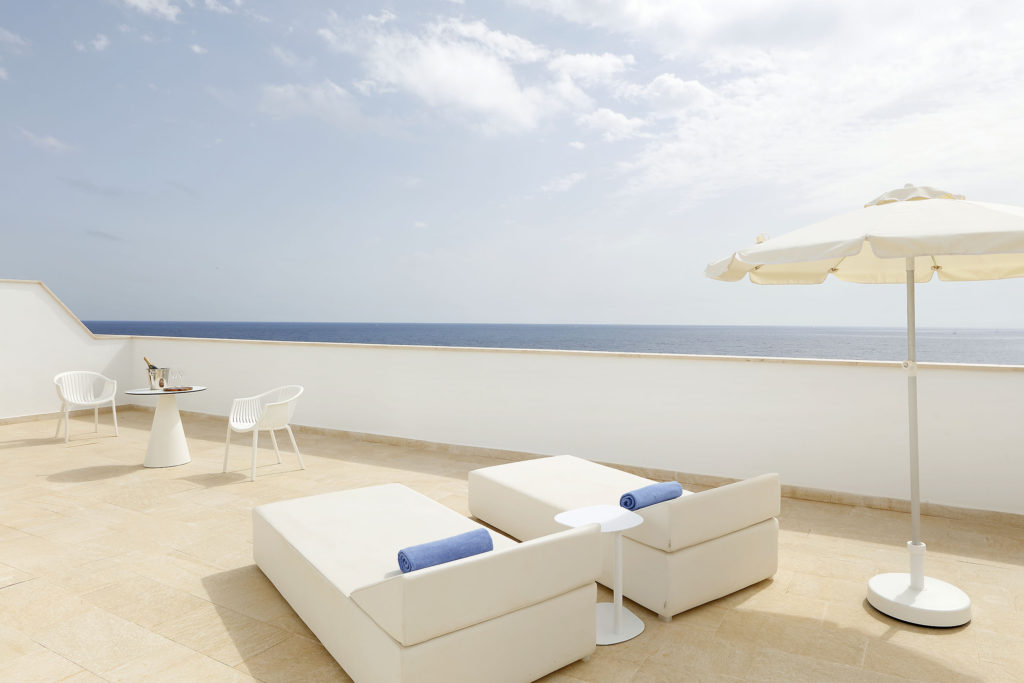
Una elección muy estudiada cuyo objetivo es crear una fusión con el paisaje y el entorno que rodea este hotel, consiguiendo un gran impacto visual en los huéspedes y una estancia inolvidable.
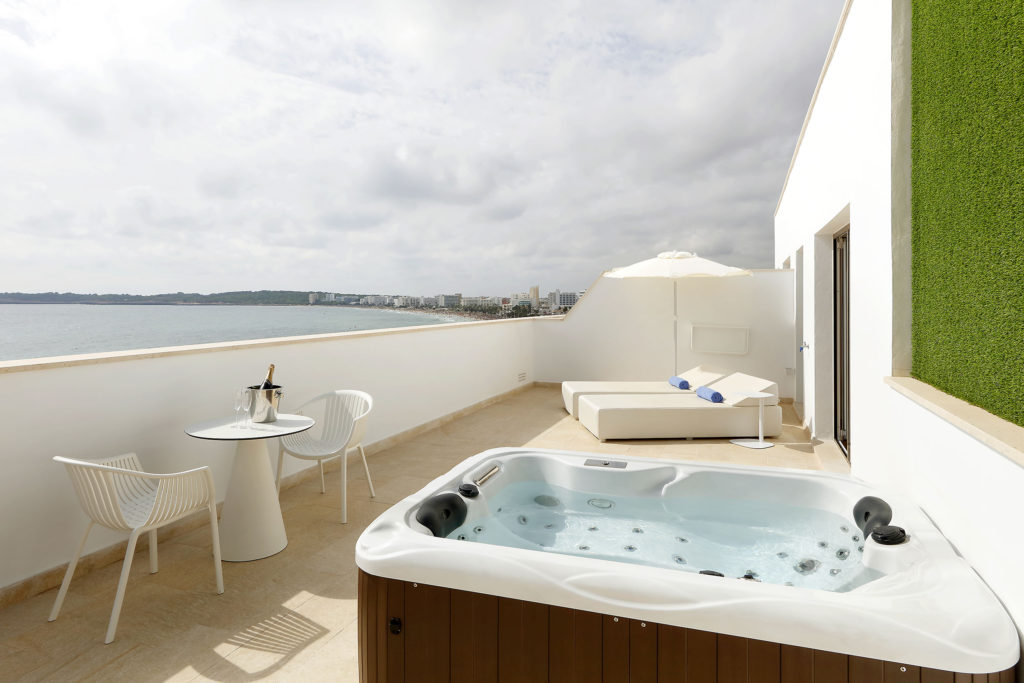
The choice of an extra-durable, resistant material is particularly important for outdoor projects. 20mm-thick porcelain combines all the technical and aesthetic features needed for the design of a hotel terrace such as that of the Hotel Sardinero in Santander: ease of installation, high resistance and excellent non-slip qualities combined with a supremely natural design.
Another of the key characteristics that make raised access flooring one of the most suitable options for exteriors is that it improves water drainage, enhancing the aesthetics by hiding the installations under the paving. On the other hand, the paving tiles can be lifted making it easier to solve the technical problems typical of this type of installation.
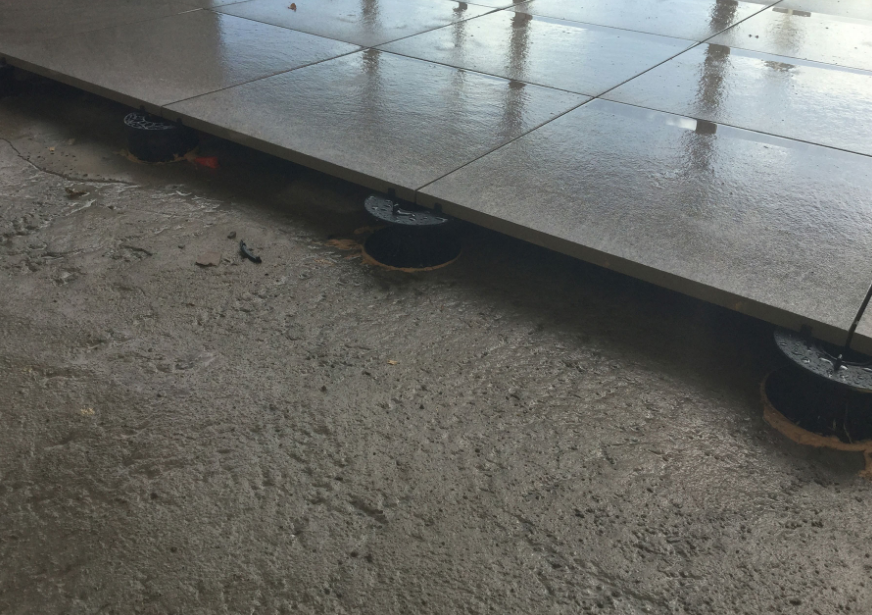
Another detail that denotes a well-thought-out design is aesthetic continuity between interiors and exteriors, achieved by using the same flooring collection but with different finishes, according to the technical requirements.
One of the hotels that best showcases this approach is the Aqua Hotel Aquamarina in Barcelona, which makes an exquisite use of the Nexo series in a relief finish for the exterior, and continues with the same collection in a polished finish for the interiors.
Worthy of a particular mention in the exteriors section is the renovation of facades. This is one way to freshen up the look of hotels like the Grand Hotel Manzana Kepinski in the heart of Havana, Cuba. Its large rooftop terrace follows the most cutting-edge minimalist design trends; the walls are tiled with large Coverlam Basic en tono gris y creando un bonito contraste con la blancura del resto del edificio.

Durable, resistant, zero-maintenance and able to withstand all kinds of weather conditions, porcelain stoneware is the ideal choice for tiling facades.

All these ideas are perfectly applicable to home decor; you can thus transfer the different hotel interior design concepts to the decoration of your home. Visit the Grespania and Coverlam catalogue and get inspired!

